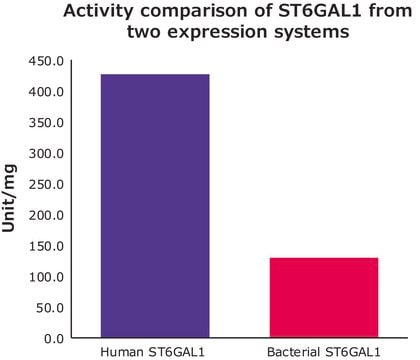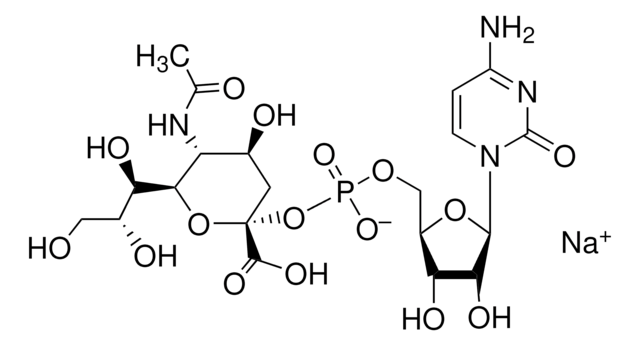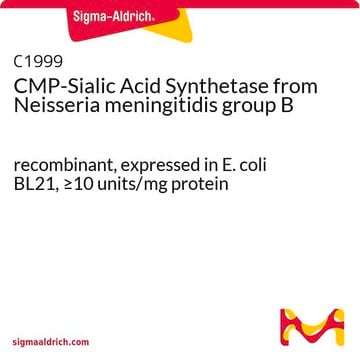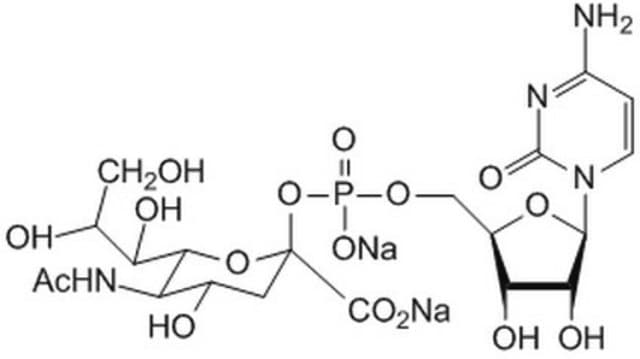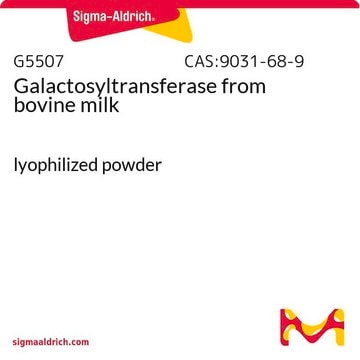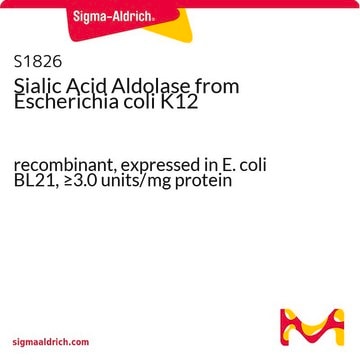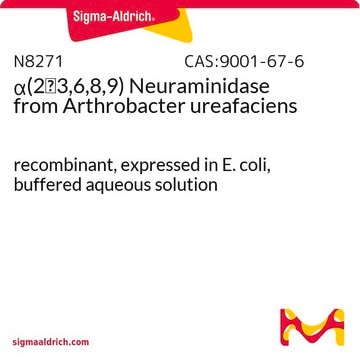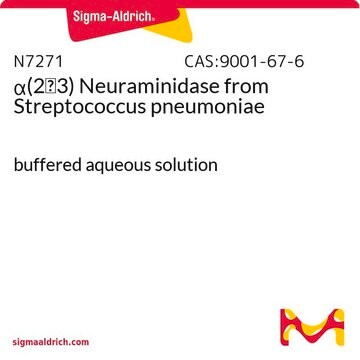S1951
α-2,3-Sialyltransferase from Pasteurella multocida
recombinant, expressed in E. coli BL21, ≥2 units/mg protein
Sinónimos:
CMP-N-acetylneuraminate:β-D-galactoside α-(2,3)-N-acetylneuraminyltransferase
About This Item
Productos recomendados
recombinant
expressed in E. coli BL21
Quality Level
form
lyophilized powder
specific activity
≥2 units/mg protein
mol wt
46.4 kDa
shipped in
dry ice
storage temp.
−20°C
General description
Biochem/physiol Actions
Unit Definition
Physical form
Preparation Note
Analysis Note
signalword
Danger
hcodes
pcodes
Hazard Classifications
Resp. Sens. 1
Storage Class
11 - Combustible Solids
wgk_germany
WGK 3
flash_point_f
Not applicable
flash_point_c
Not applicable
Certificados de análisis (COA)
Busque Certificados de análisis (COA) introduciendo el número de lote del producto. Los números de lote se encuentran en la etiqueta del producto después de las palabras «Lot» o «Batch»
¿Ya tiene este producto?
Encuentre la documentación para los productos que ha comprado recientemente en la Biblioteca de documentos.
Los clientes también vieron
Artículos
Explore tools for glycosyltransferase synthesis and modification of glycans, such as glycosyltransferases and nucleotide sugar donors.
Explore tools for glycosyltransferase synthesis and modification of glycans, such as glycosyltransferases and nucleotide sugar donors.
Explore tools for glycosyltransferase synthesis and modification of glycans, such as glycosyltransferases and nucleotide sugar donors.
Explore tools for glycosyltransferase synthesis and modification of glycans, such as glycosyltransferases and nucleotide sugar donors.
Nuestro equipo de científicos tiene experiencia en todas las áreas de investigación: Ciencias de la vida, Ciencia de los materiales, Síntesis química, Cromatografía, Analítica y muchas otras.
Póngase en contacto con el Servicio técnico
